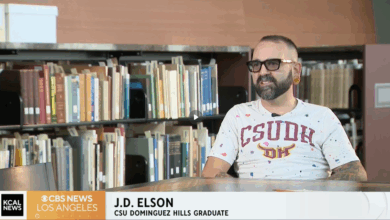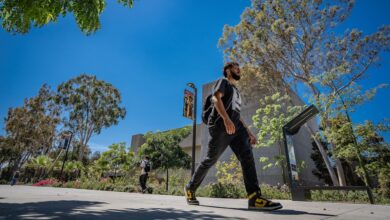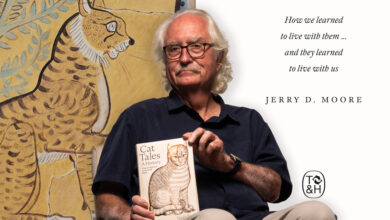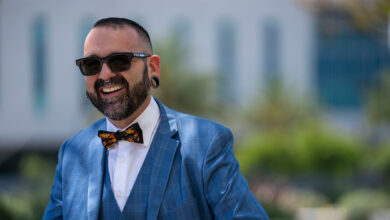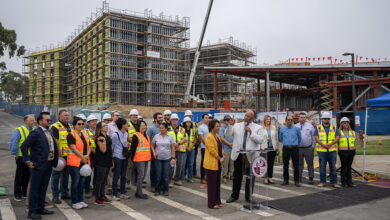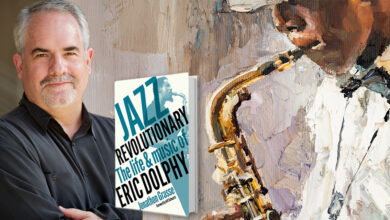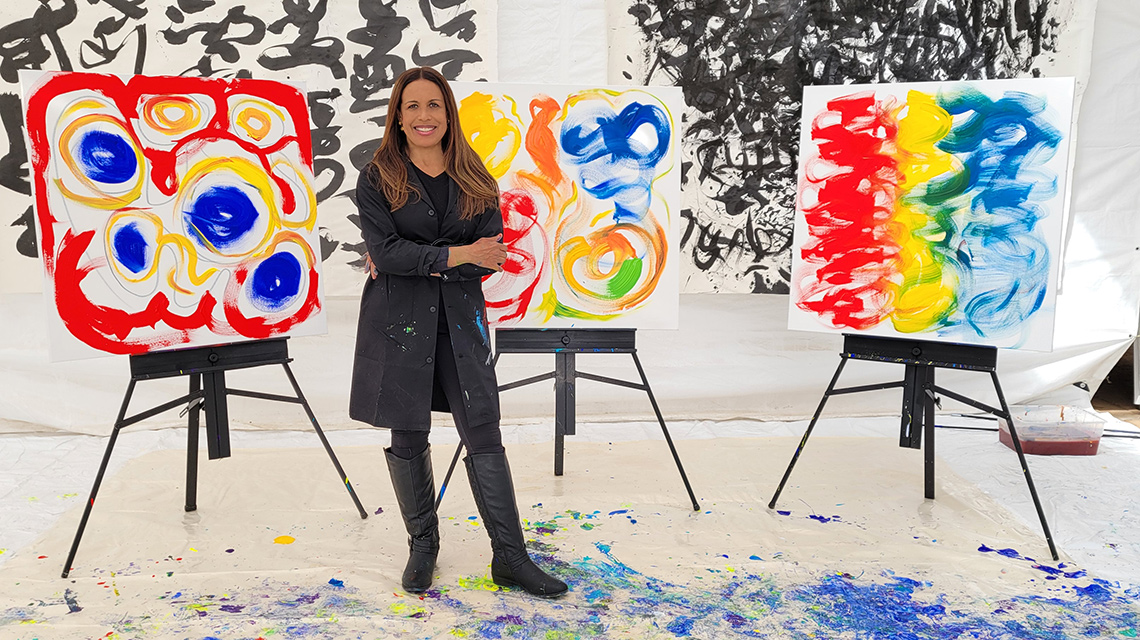
Moving brush and hand across canvas, often with the motion of a conductor’s baton, mixed-media artist Toni Scott created two original “live paintings” in harmony with the Inner City Youth Orchestra of Los Angeles as it played through the dramatic peaks and valleys of Gershwin’s “Rhapsody in Blue” and “Beethoven’s 5th Symphony.”
Titled “The Intersection of Art and Music,” the unique artistic collaboration was prerecorded and shown during CSUDH President Thomas A. Parham’s Spring 2021 Presidential Distinguished Lecture Series on Wednesday, March 24.
Before and after each of the performances, Parham led an in-depth discussion with Scott and Dickerson that examined the symbiotic relationship between visual arts and music and the unique feelings and creative flow that emerge while a visual artist paints with an orchestral muse.
President Parham established the Presidential Distinguished Lecture Series to engage the campus and surrounding community in thought-provoking discussions on some of society’s most pressing issues. Each year, the series will bring leading scholars, artists, and leaders to share their thoughts and experiences with the Toro community.
The following are excerpts from their discussion. A video of the full lecture and live painting performance will be added soon.
The Conversation: Pre-Performance
Parham: Artists often provide a window into their spiritual energy and life force that is reflected in their artistic creations. In a general sense, what do you want the audience to know about you that is reflected in the body of your work that you will present today?
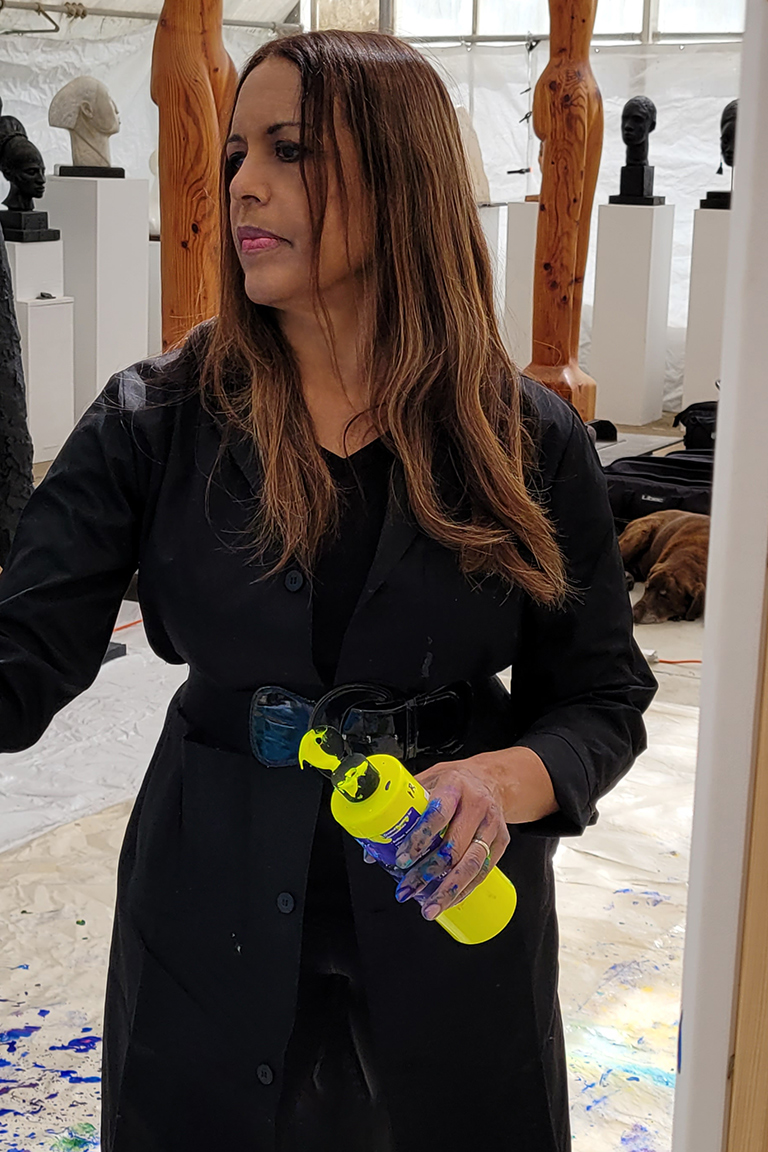
Scott: My art is not driven for art’s sake, but by my spirit. In every piece I create I draw inspiration from God. I pray. In every piece there’s a process I write that’s spiritual and speaking in tongue[s]. So I would like the audience to know my work is based in being spiritual, and in healing, in understanding, and in commentary about events and injustices. It comes from the heart.
Parham: I am aware for both musicians and artists that music is the language of the soul, and I understand musicians and artists are perceived as truth tellers about the social context that impact people’s lives. Charles, what about you? What’s the truth telling you to do?
Dickerson: I would like everyone to know that what we do – what Toni will do today – and what I have the privilege of doing on campus is to try to prepare people for the way of the world. Sometimes, it’s a tough road. If we seek our highest objectives, as Toni and I do with art, we find the truth, that the way of the world is cool. It’s a smooth road. Know that what we are here tonight present in terms of Toni’s visual art and the music we offer at Dominguez Hills, and we are here to help you prepare for life. If you come to us, and reach out to your art, it will be a good and cool road.
Post-Performance Discussion
Parham: As we think about both the content and the process dynamic around creating art, what does the content of these pieces reveal to the audience?
Scott: It’s more about the process versus the end result. The idea of live painting, or performing this live, is to see how layers are built up. The idea of going to a concert, listening and being there in person is to witness the magic of the music and the variations of instruments, and how everything comes together. I think when you look at these paintings what you see are layers relating to the instruments, sound, and the buildup – how things are juxtaposed. Rather than just seeing the result of a painting, there is a direct response in this collaboration. The creation and color response are a dance between the two mediums.
Parham: What was going through your mind, heart, and spirit as you were rendering the art?
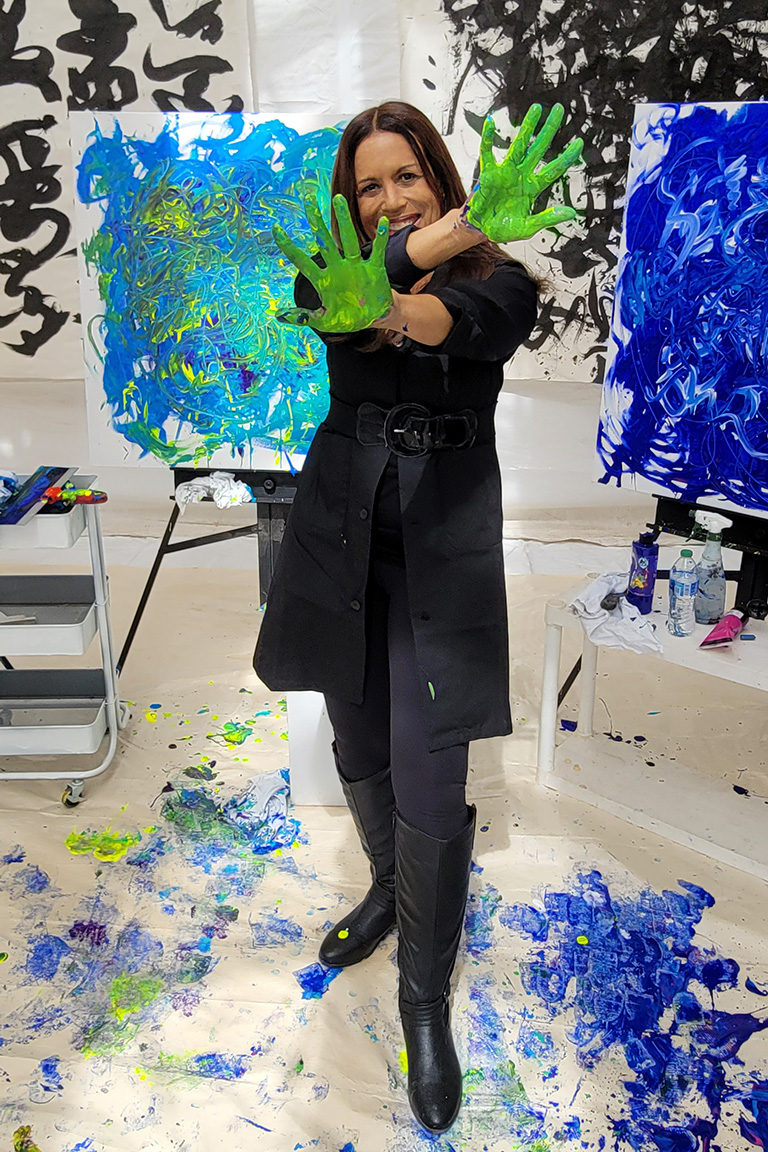 Scott: Well, the connection ran deeper than just the beauty of “Rhapsody in Blue.” It was an understanding of the youth playing and the years they spent cultivating their talents. It’s a layered experience. It’s not only the music, but the substance and foundation this grew out of.
Scott: Well, the connection ran deeper than just the beauty of “Rhapsody in Blue.” It was an understanding of the youth playing and the years they spent cultivating their talents. It’s a layered experience. It’s not only the music, but the substance and foundation this grew out of.
This piece pulled me out of my comfort zone. This song has so many transitions. It’s exciting. I wanted to respond and that’s why I have three canvasses, for the nuances of the transitions and how the orchestra is positioned. Each canvas represents to me the left, right, and middle side of the orchestra. The brushes were the baton of the conductor.
Parham: Professor Dickerson, what was it like for you to conduct, and then see Toni do the work?
Dickerson: We wanted to complement what she did. You can sit back and listen to the music all day by itself, but to have the unique opportunity to merge with this different art form just gave us another reason to be excited about it, and hopefully play it in such a way that encouraged Toni to do what she did.
Parham: In the paintings that you produced this evening, are there symbolic representations that are reflected in the colors, shapes, the angles, and in the positioning of the abstract images on the canvases themselves?
Scott: The symbolism is more intuitive and very much genetic. I would say the red is fire. It’s rivers. It’s history. It’s movement. It’s passion. The blue is the water. It’s the heart, and the yellow is the sun. When I think about African artwork it’s not representational. It’s exaggerated. It’s work created for a higher purpose than an object. It’s communicated for the spirits and ancestors.
As I created the pieces, that was in my mind as I thought about my indigenous heritage. The rivers and oceans we crossed. The moons that passed. Every level there is inherently a genetic connection that is built in, and with the African art specifically, it is the higher goal is the spirit as opposed to the product.
Parham: What are the teachable moments in this lecture that you would like to give to our students?
Scott: I would say that as you face challenges, don’t be afraid to fail. With your failure you can win. Don’t be afraid of the fear, because where there’s fear, there’s an opportunity for faith. Give it your best. Whatever the challenge is, rise, and if you don’t have the tools, find those tools. I spent a lot of time really looking at sheet music and thinking about the nuances and instruments, and watching Charles conduct the orchestra. For the students, reach beyond. Don’t be afraid. Move forward and climb the mountain.
Dickerson: When you have the melody of life, take the lead. When you have the harmony, sit back and be the support system that creates the art experience, like Toni was creating for us on canvas. At the beginning of the music (“Rhapsody in Blue”) there was a clarinet. He took the lead, as you should to handle your own responsibilities. You have a duty to contribute to the harmony of life. If you can do that, you’re taking the lead and are a contributor to the betterment of society.



